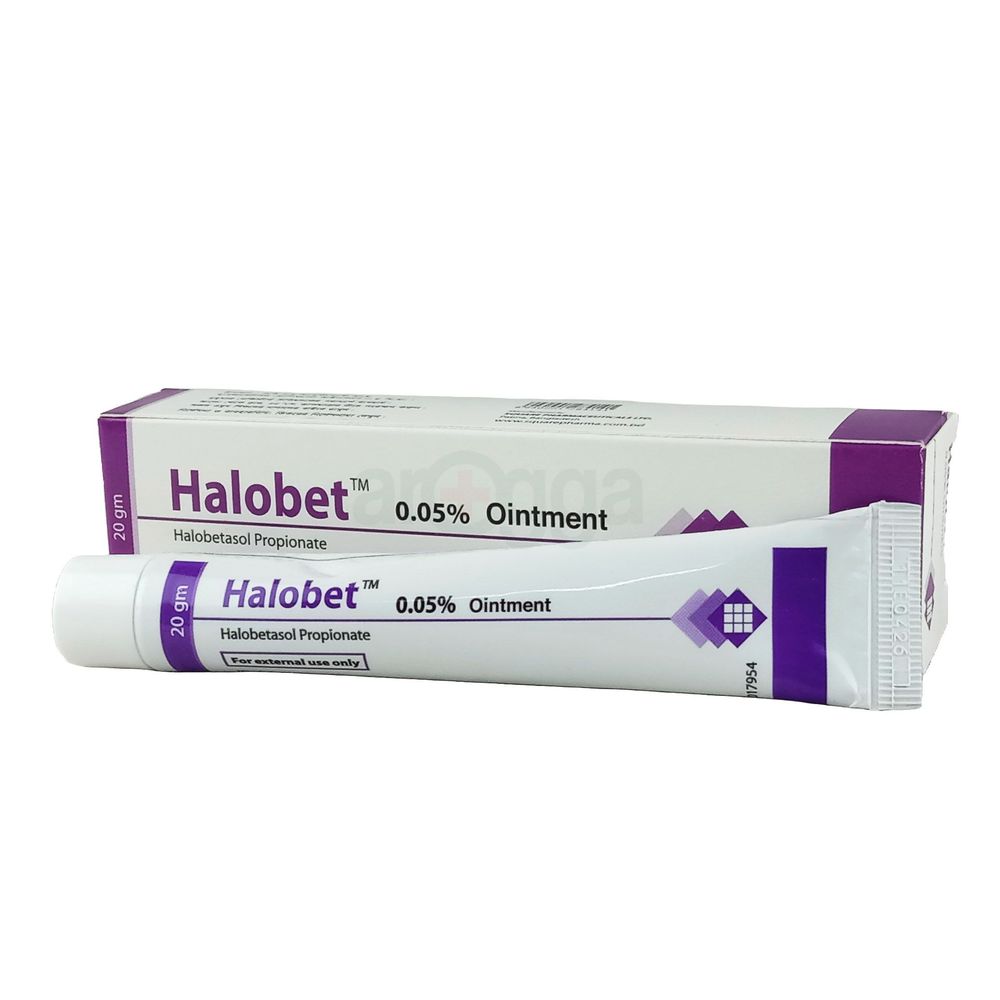

12-24 Hours
ব্যবসার জন্য পাইকারি দামে পণ্য কিনতে রেজিস্টেশন করুন
Register
0 People recently viewed this
Halobet Ointment
Square Pharmaceuticals PLC.
Generic: Halobetasol Propionate 0.05% Topical
Safety Advices
বাংলা
English
CONSULT YOUR DOCTOR
Halobet Ointment may be unsafe to use during pregnancy. Although there are limited studies in humans, animal studies have shown harmful effects on the developing baby. Your doctor will weigh the benefits and any potential risks before prescribing it to you. Please consult your doctor.
SAFE IF PRESCRIBED
Halobet Ointment is probably safe to use during breastfeeding. Limited human data suggests that the drug does not represent any significant risk to the baby.
Medicine Overview of Halobet Ointment 0.05% Ointment
Introduction
Halobet Ointment belongs to a group of medicine called steroids. It is used for treatment of allergic disorders and inflammatory skin conditions. It provides relief from swelling, redness, and itching in the affected area. Halobet Ointment is only meant for external use and should be used as advised by your doctor. You should normally wash and dry the affected area before applying a thin layer of the medicine evenly on the affected skin. Use it regularly to get the maximum from it. Avoid any contact with your eyes, nose, or mouth. Rinse it off with plenty of water in case...
... Show moreUses of Halobet Ointment
- Allergic disorders
Side effects of Halobet Ointment
Common
- Headache
- Application site pain
How to use Halobet Ointment
This medicine is for external use only. Use it in the dose and duration as advised by your doctor. Check the label for directions before use. Clean and dry the affected area and apply the cream. Wash your hands after applying, unless hands are the affected area.
How Halobet Ointment works
Halobet Ointment is a steroid. It works by blocking the production of certain chemical messengers (prostaglandins) that make the skin red, swollen and itchy.
Quick Tips
- Halobet Ointment is used to treat the redness, swelling, itching, and discomfort of various skin conditions.
- It should be applied to the affected areas as a thin film two or three times daily, or as advised by your doctor.
- Don't use it more often or for longer than advised by your doctor.
- Don't cover the area being treated with airtight dressings such as bandages unless directed by a doctor, as this may increase the risk of side effects.
- If you think the area of skin you are treating has become infected you should stop using Halobet Ointment and consult your doctor.
- Consult your doctor if your skin condition has not improved after 2 weeks of treatment.
- Side effects such as mood changes or stomach problems can happen when you start taking Halobet Ointment. Inform your doctor if this bothers you.
- Do not stop taking Halobet Ointment suddenly without talking to your doctor first as it may worsen your symptoms.
Brief Description
Indication
Psoriasis, Eczema, Corticosteroid-responsive dermatoses
Administration
A thin layer should be applied to the affected skin once or twice daily and rub in gently and completely.
Adult Dose
Inflammatory, Pruritic & Steroid-Responsive Dermatoses
Apply topically to affected area(s) BID
Not to exceed 50 g/week; do not use longer than 2 consecutive weeks
Child Dose
Inflammatory, Pruritic & Steroid-Responsive Dermatoses
12 years: Apply topically to affected area(s) BID
Not to exceed 50 g/wk; do not use longer than 2 wk
Contraindication
Halobetasol Propionate Cream/Ointment is contraindicated in those patients with a history of hypersensitivity to any of the components of the preparation.
Mode of Action
Corticosteroids decrease inflammation by stabilizing leukocyte lysosomal membranes, preventing release of destructive acid hydrolases from leukocytes; inhibiting macrophage accumulation in inflamed areas; reducing leukocyte adhesion to capillary endothelium; reducing capillary wall permeability and edema formation; decreasing complement components; antagonizing histamine activity and release of kinin from substrates; reducing fibroblast proliferation, collagen deposition, and subsequent scar tissue formation.
Precaution
Systemic absorption of topical corticosteroids may cause reversible hypothalamic-pituitaryadrenal (HPA) axis suppression, manifestations of cushing\'s syndrome, hyperglycemia, and glucosuria. Patients receiving large dose of a potent topical steroid applied to a large surface area or under an occlusive dressing should be evaluated periodically for evidence of HPA axis suppression by using the urinary free cortisol and ACTH stimulation tests. If HPA axis suppression is noted, an attempt should be made to withdraw the drug, to reduce the frequency of application, or to substitute a less potent steroid.
Lactation: excretion of topical corticosteroids in breast milk is unknown; use with caution
Side Effect
Skin atrophy,Striae,Acneform lesions,Intracranial hypertension,Allergic contact dermatitis,Pruritus,Pustulation,Perioral dermatitis,Urticaria,Hypertrichosis,Leukoderma,Pigmentation changes,HPA suppression (with higher potency used >2 wk)
ব্যবসার জন্য পাইকারি দামে পণ্য কিনতে রেজিস্টেশন করুন
Register